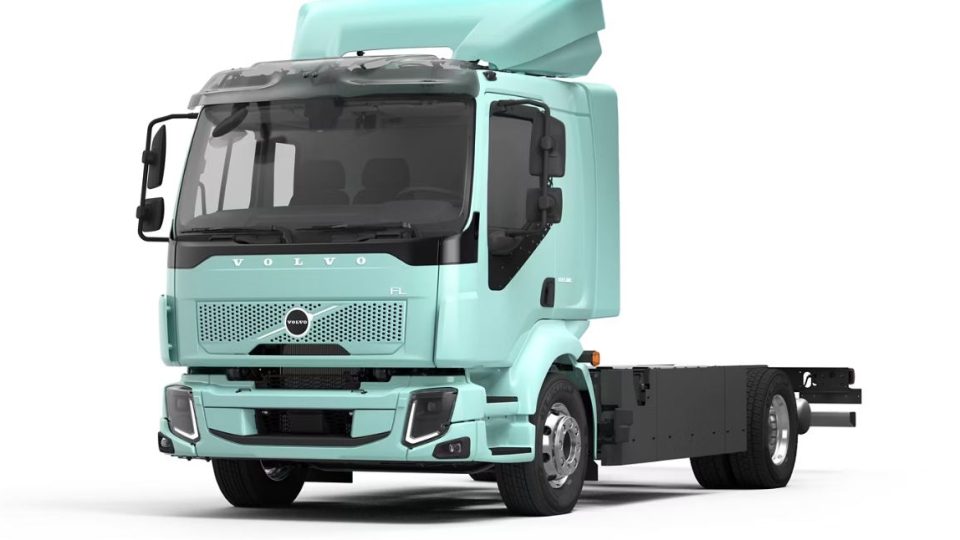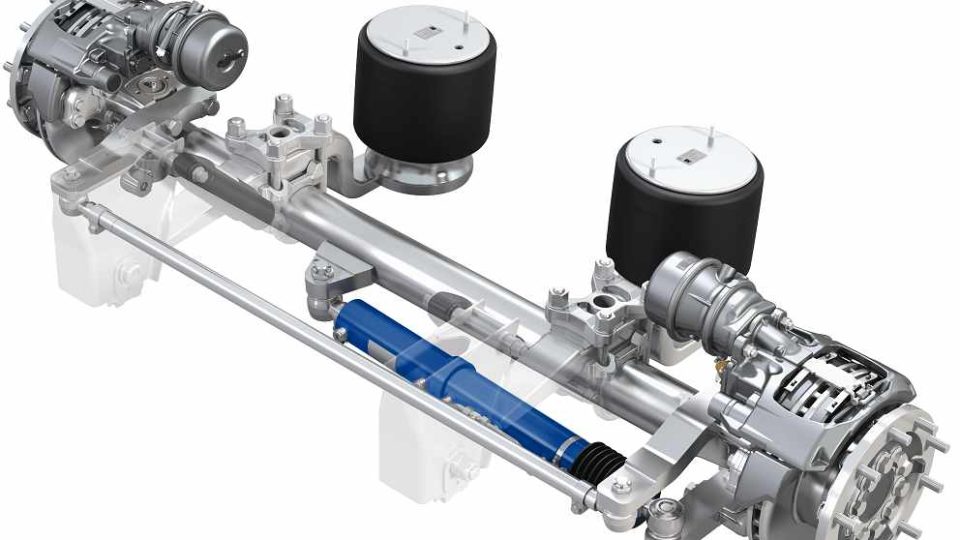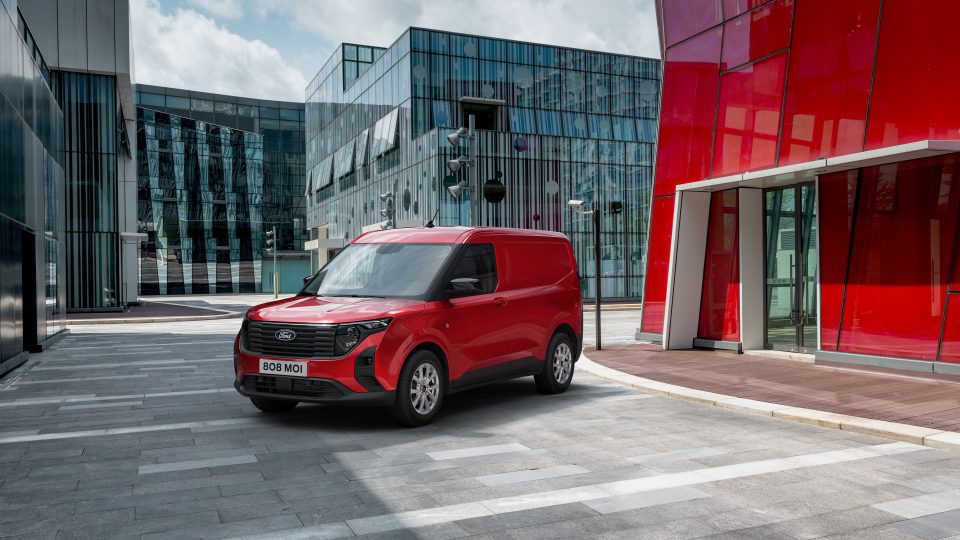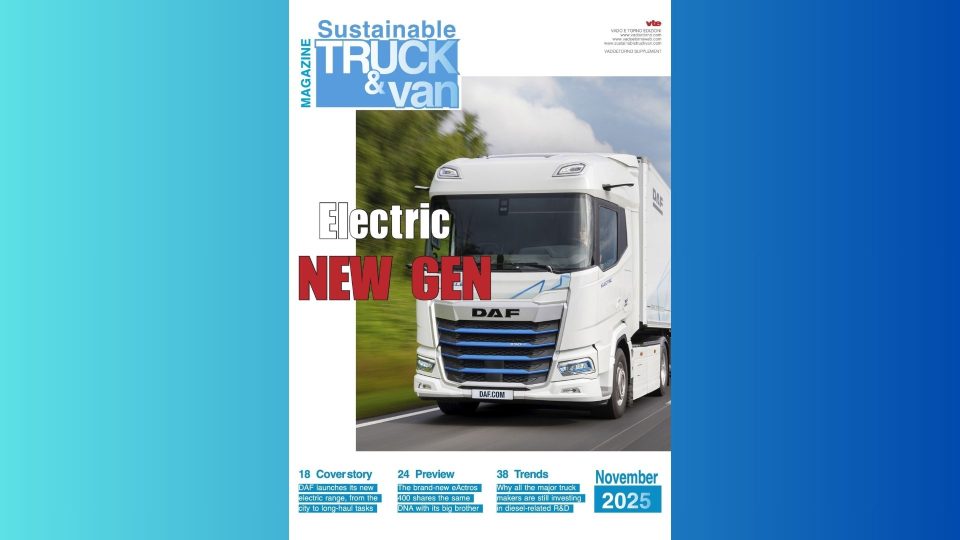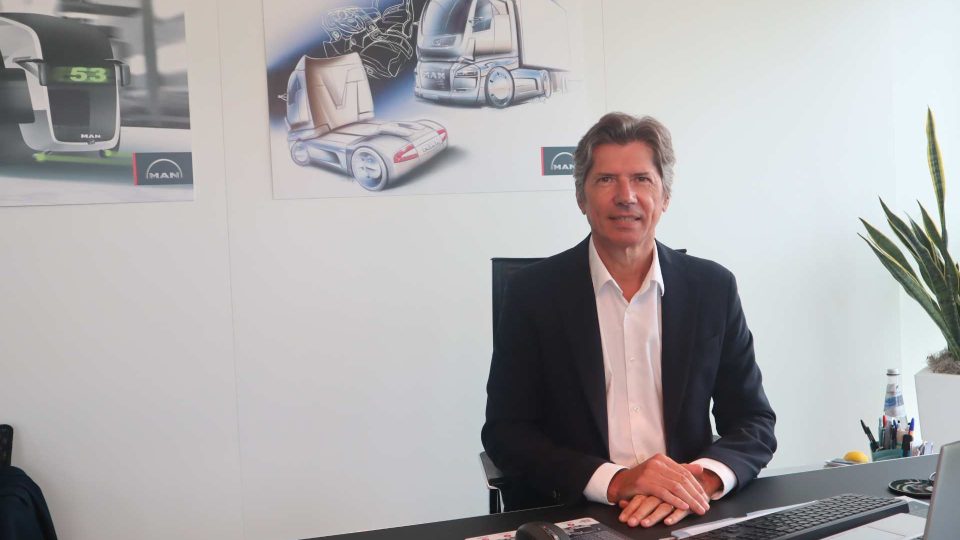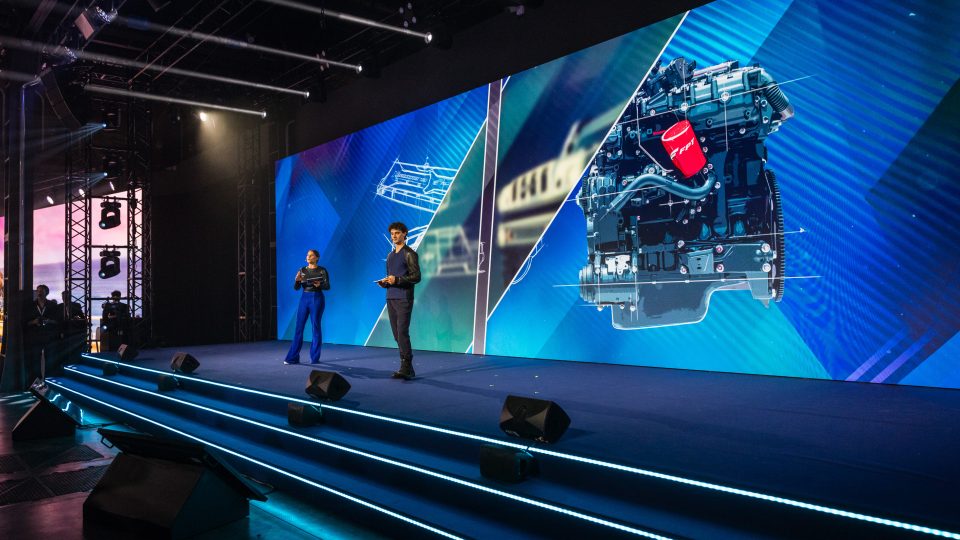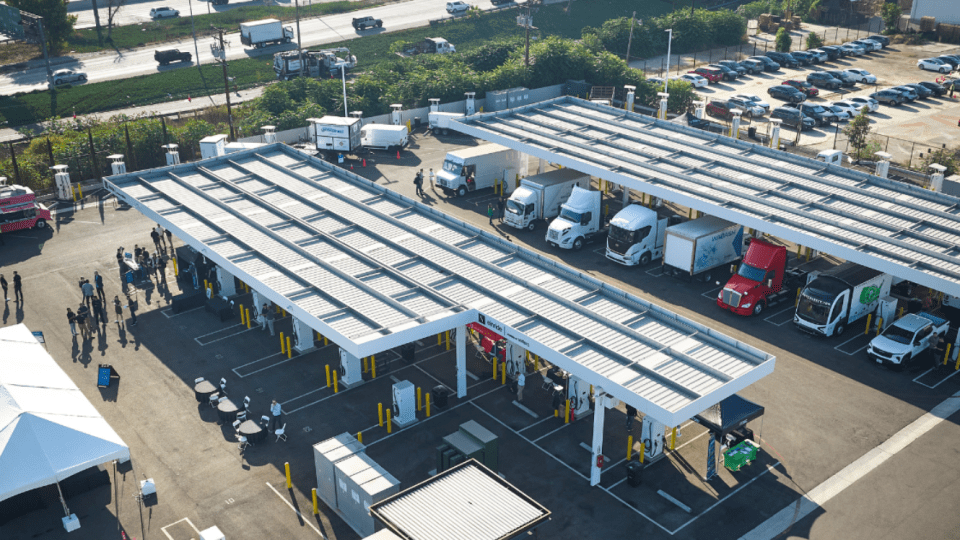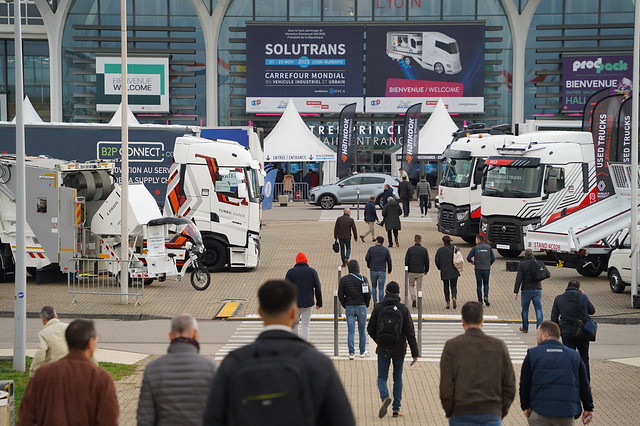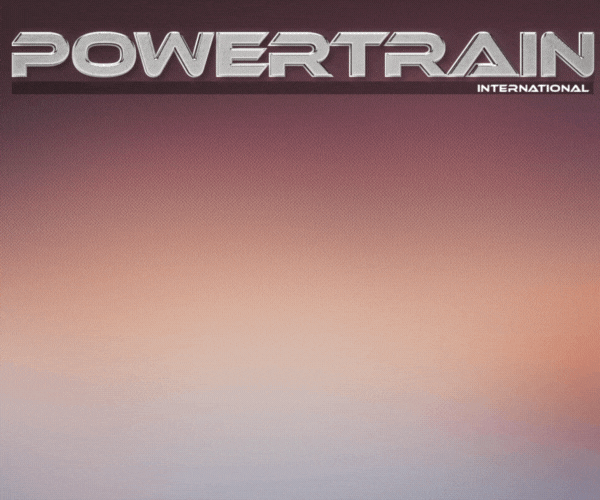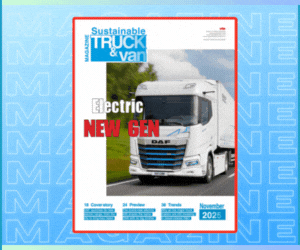«We are living a revolution. And Scania is ready for it». Our interview with Head of Sustainability Andreas Follér
Who’s better than Andreas Follér, Head of Sustainability at Scania, to talk about the Swedish company’s view on the current technology and energy transition? That’s what we thought while chatting with him on several hot topics: from the possibilities and challenges of electrification in the truck sector to the prospects on fuel cells, up to the efforts Scania is putting on R&D of internal combustion engines to make the above-mentioned transition smoother and cleaner.
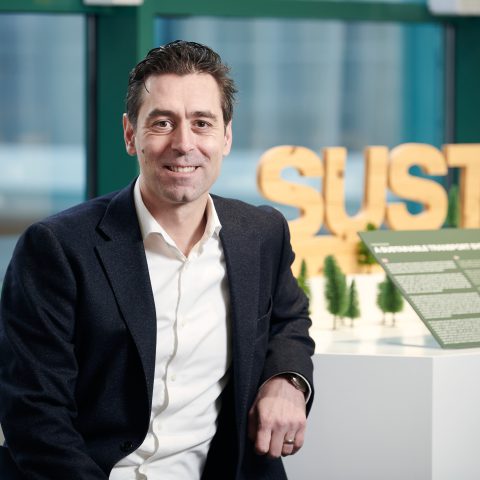
Who’s better than Andreas Follér, Head of Sustainability at Scania, to talk about the Swedish company’s view on the current technology and energy transition? That’s what we thought while chatting with him on several hot topics: from the possibilities and challenges of electrification in the truck sector to the prospects on fuel cells, up to the efforts Scania is putting on R&D of internal combustion engines to make the above-mentioned transition smoother and cleaner. «Even if Scania manages to achieve the ambitious target to have 50% of our sales volume made by electric vehicles by 2030, 90% of the rolling fleet will be ICE», told us Follér. «So, it’s crucial that we continue to provide the market with extremely good ICE-powered vehicles». However, let’s start from an “electric” award…
At the end of the day, the segment that will gain the most from electrification is the long-haul segment, as that’s where more fuels are burnt. Here, battery-electric trucks make more sense for our customers
Andreas Foller, Head of Sustainability at Scania
Scania awarded for sustainability in 2022
Scania was awarded with the Sustainable Truck of the Year 2022 in the Distribution category for the 25 P BEV. How’s the urban and regional distribution segment crucial within the company’s strategy for boosting electrification?
«The urban segment is really crucial for us. It’s where we ramp up and build confidence not only in the product, but also in everything that goes around it. You may say it’s a springboard to build trust among customers and awareness among all the relevant stakeholders, especially when it comes to infrastructures.
Also, electrifying trucks addressed to urban environment is very suitable. You need to have a very light footprint, you need to concern about the noise levels, emission levels and so on. We may say it is a laboratory for us, in order to test what we can do with e-mobility also in other segments».

What is the feedback coming from customers which are already using, or testing, electric distribution trucks?
«The customers are generally very excited about these products. We knew and we were prepared for operational challenges. We are living a revolution, in many ways: from finance to charging, service, repair and maintenance, it’s so much different compared to the past! These are premium products: they’re silent, smooth and they’re doing the job just as you can expect from a Scania truck».
There’s so much talking about the difficulties to switch to electrification in long-haul transportation. What’s the view of a major player like Scania on this? Is it likely to solve all the relevant issues (range, infrastructure, amount of power required, etc.) in the medium-term?
«Our view is that we will be there sooner than most people expect. Already this year, we will open the order book for products that can run 40 tons for 4 hours and charging from 45 minutes to one hour. Then, we’ll have heavy-duty products reaching 60 tons. By 2025, our full product range will have some electric versions.
I can say technology is there, this is not the challenge anymore. We’ve secured the batteries from our partners, we have fantastic drivetrain. Now, the challenge is on the operational side. We have to be sure we have the charging infrastructure and operational capacity to support our customers. Here, we have to work together with governments and regions to be able to sort this out quickly».
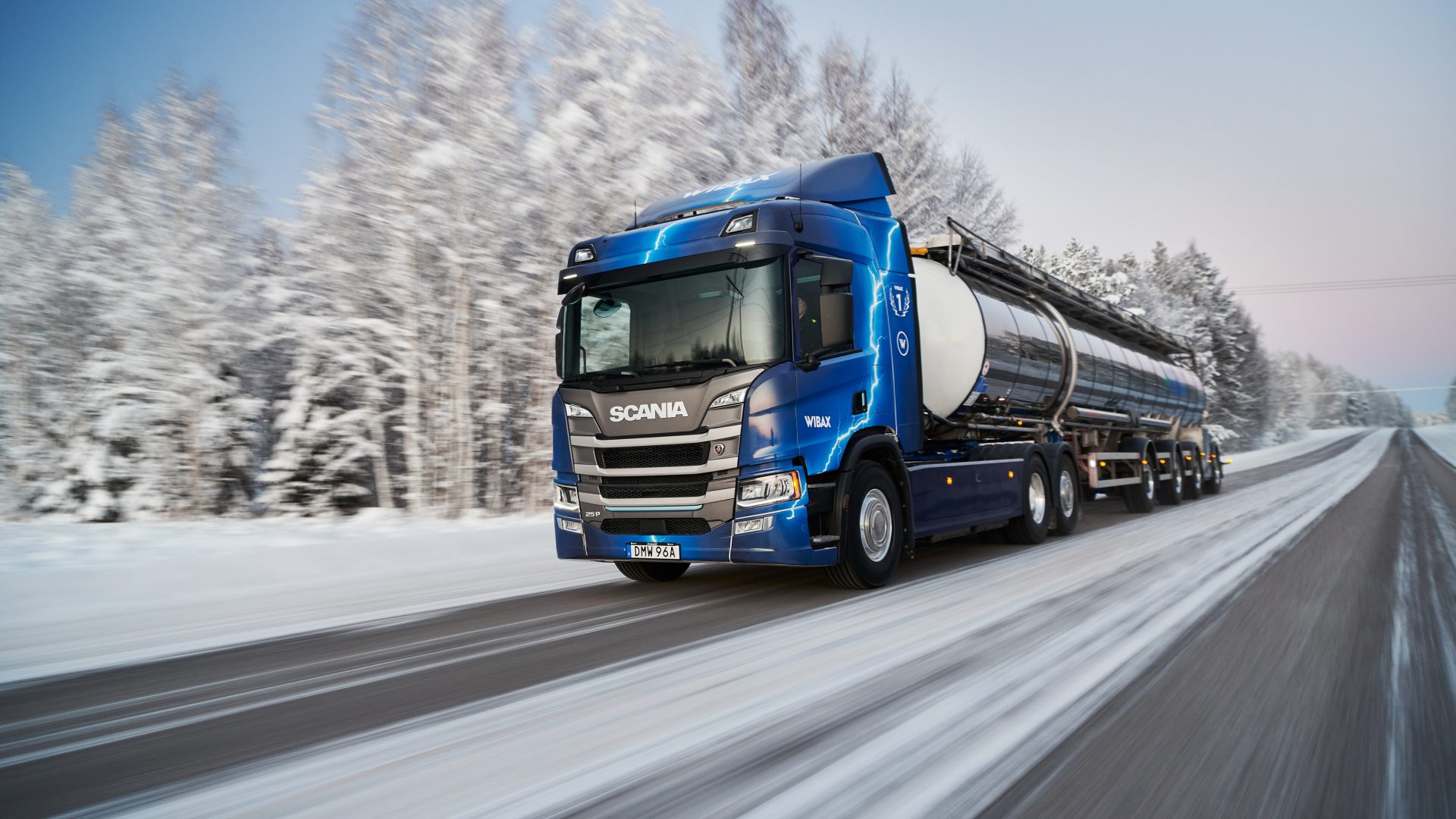
Infrastructures and hydrogen opportunities
Talking about charging infrastructure for long-haul transportation, where are we now, in your opinion? And what’s really missing?
«As a first step, and here we’re really putting a lot of investments and efforts so far, depot charging is our focus. Of course, the challenge is on public charging infrastructure, and this is of course the next step. The joint venture with Daimler and Volvo is a very important project, as we are planning to build at least 1,700 charging stations across all Europe. However, we are supposed to have something in between 25,000 and 40,000 charging points in Europe to fulfil future requirements in transportation.
The fuel system has been around for 150 years, and now we only have a few years to build a completely different system. So, we need to synchronize the technology from OEMs, the readiness from the customers and the charging infrastructure that business and governments need to build together».
What is Scania’s strategy about hydrogen?
«We believe that battery-electric trucks represent the most efficient and sustainable solution. Fuel cell electric vehicles will be a complementary solution for some transport applications and in certain regions. We see some disadvantages compared to battery-electric technology in terms of efficiency.
On the other hand, hydrogen is going to be the energy carrier of the future. We are researching, and piloting hydrogen-powered vehicles. We have four of them running in Norway, two in Sweden. This is a very interesting pathway as well».
Scania is collaborating with customers on some heavy-duty electric vehicle applications, up to 80 ton. Can you tell us something more about these special projects and the role Scania wants to have in this market niche?
«This is our bread and butter! At the end of the day, we mainly serve the really heavy-duty commercial transport side. We want to prove that it’s not a distant vision of the future, it’s really here and now. In collaboration with key customers, like Wibax, for instance, or Swedish LKAB for the mining industry, we want to show it is possible to have such solutions even before 2025».
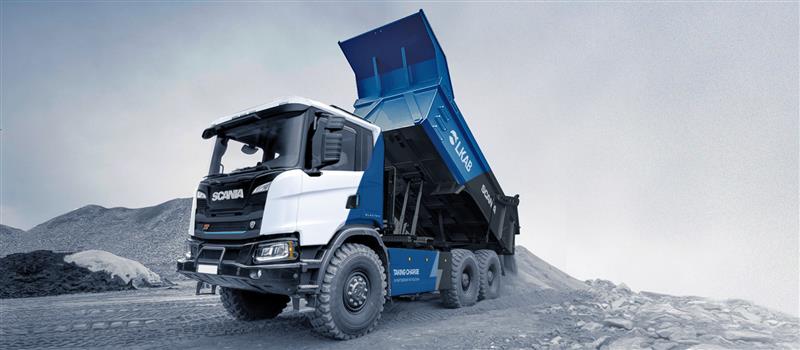
Big changes ahead in Södertälje
Scania has recently announced some interesting projects in Södertälje, such as the construction of either a battery assembly plant or a test track for autonomous and electric trucks. How are these projects going? And how’s the Södertälje facility changing?
«We’re investing heavily into this, for the simple reason that we’re sure this is the future. The battery plant, where we will produce both battery modules and packs, is the biggest investment in our history. The plant is fully integrated in our chassis production line. We have now decided to invest in this new test track.
Also, there are more people in our R&D department in Södertälje who are working in e-mobility compared to our ICE vehicle development. We invest more of our R&D budget in new technologies that in ICE, so the shift is already taking place in Södertälje».
How’s the research on internal combustion engines important to reach the target of reducing the emissions generated by Scania vehicles and products by 20% by 2025? Is it still possible to enhance engine efficiency today? How?
«If you do the math you see that even if Scania manages to achieve the ambitious target to have 50% of our sales volume made by electric vehicles by 2030, 90% of the rolling fleet will be ICE. So, it’s crucial that we continue to provide the market with extremely good ICE-powered vehicles. It’s also crucial for the market that we boost renewable fuels, both blending them with the diesel and providing 100% renewable fuels.
Biomethane, HVO are already available solutions that can provide real CO2 reduction. Last year, Scania launched a renewed engine platform capable to ensure another 8% fuel savings. Customers choose a brand instead of another mainly under a TCO perspective. Fuel prices are on the rise currently, which makes even more important to reduce fuel consumption.
There’s still efficiency potential when it comes to the ICE products. We believe we can find real improvement in this technology, for instance with the exhaust after treatment system we can do a couple of percentage more».
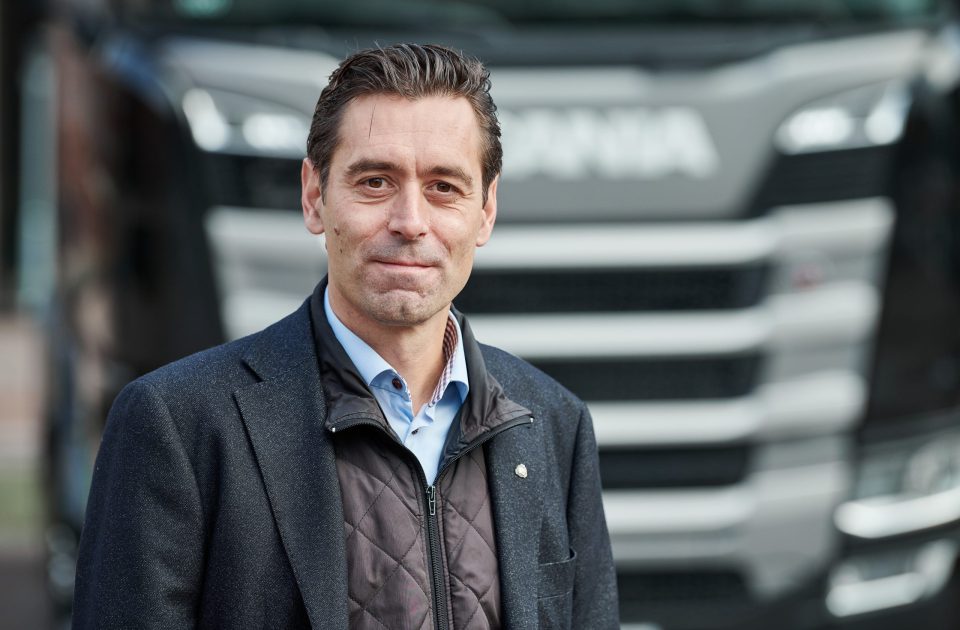
Beyond sustainability: what about the iconic roar of Scania IC engines?
We know that Scania has a very unique image among the customers, also related to ICE engines, their roar. Are you a bit scared such an advantage may disappear with the transition to zero-emission trucks?
«I would not be honest with you if I said it’s not a concern we’re discussing. We believe it’s real. We have the best ICEs ever built, drivers love it, customers love it. It’s been the backbone of Scania for a long time. However, it’s not time to be nostalgic. We truly believe our customers will love our battery-electric products with the same passion, hopefully. We’ll do everything we can to go on this journey with our customers».
It’s crucial that we continue to provide the market with extremely good ICE-powered vehicles. It’s also crucial for the market that we boost renewable fuels, both blending them with the diesel and providing 100% renewable fuels.
Andreas Foller, Head of Sustainability at Scania, on the R&D on IC engines
Wouldn’t it possible to imagine trucks with very efficient internal combustion engines for long-haul transportation until 2035, and maybe more, and the other segments all of them electrified?
«At the end of the day, the segment that will gain the most from electrification is the long-haul segment, as that’s where more fuels are burnt. Here, battery-electric trucks make more sense for our customers. The emotional part is very important, but we have to remember that our customers are business men and need to get their business work. When you’re approaching 2030 and beyond, it will be very difficult from a TCO perspective to justify the costs of ICEs running on diesel.
Also, end customers will be asking for sustainable transport solutions to their suppliers. And there will be legislation issues, operational issues, road tolls and so on that will push towards zero-emission solutions».
In the end, how can you imagine the truck sector in ten years, in terms of technological development?
«That’s a big question. I’d say we’re very confident under the technology point of view. We believe that at this point there are no more actual technological barriers left. We’ll move in approximately 10% of our sales being zero-emission by 2025. Looking at 2030, maybe half of our overall volumes. By 2040, I believe the transformation will be complete, with nearly all the trucks being battery-electric or fuel cell.
When it comes to sustainability, the next horizon will deal with the possibility to have zero-emission products with minimal environmental footprint, with the companies capable to create circular flows in their production. I also believe this is only a small part of a much bigger journey that is energy transition. We need to phase out fossil fuels and replace them with renewable fuels».



